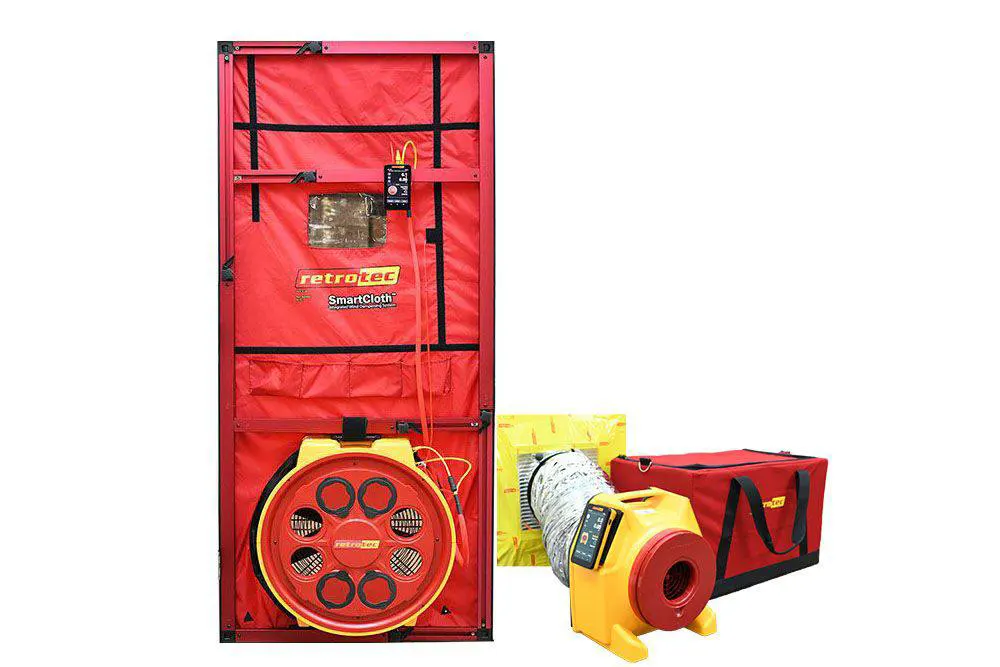Case Study: Enhanced Energy Efficiency with Door Blower Testing
Achieving energy efficiency is essential for reducing operational costs and enhancing indoor comfort. In this case, a newly constructed office building faced unexpected energy inefficiencies and air leaks despite adhering to modern construction standards. By conducting a Door Blower Test, we were able to identify and address hidden issues, resulting in improved energy performance and compliance with green building standards.
The Property
- Type: Multi-story office building
- Location: Urban New Zealand
- Construction Type: Steel-frame with insulated wall panels and double-glazed windows
- Size: 2,500 square meters
- Issue: Higher-than-expected energy costs and inconsistent indoor temperatures in various zones of the building.
The property owner aimed to achieve a high energy efficiency rating and meet compliance for sustainable building certifications. However, rising energy costs and complaints from tenants indicated air leakage issues that needed to be addressed.
Challenges
- Achieving Green Certification:
- The building needed to meet specific air tightness standards to qualify for energy efficiency certifications.
- Hidden Air Leaks:
- Modern buildings often conceal air leaks within complex wall assemblies, making traditional inspection methods ineffective.
- Large Building Size:
- Identifying air leaks in a building of this size and complexity required a systematic and precise approach.
- Minimal Disruption:
- As the building was partially occupied, the testing and remediation processes needed to cause minimal disruption to tenants.
Our Approach: Comprehensive Door Blower Testing
To tackle the challenges, we performed a Door Blower Test to measure and locate air leaks accurately.
- Preparation
Before conducting the test, our team took the following steps:
- Sealed HVAC vents and other intentional openings to ensure accurate test results.
- Coordinated with tenants to schedule testing during off-hours to minimize disruption.
- Door Blower Testing
Using advanced equipment, we installed a door blower fan in the main entrance of the building:
- Pressure Testing:
- Created a controlled pressure difference between the building interior and exterior to measure air leakage.
- Smoke Testing:
- Used a smoke generator to visualize airflow through cracks, seams, and other hidden openings.
- Zone-by-Zone Testing:
- Isolated different areas of the building to locate localized air leaks efficiently.
- Thermal Imaging Support
To enhance the accuracy of the findings, we combined the Door Blower Test with Thermal Imaging to identify temperature differentials caused by leaks.
Findings
The Door Blower Test revealed several air leakage points affecting the building’s energy efficiency:
- Window Seals:
- Poorly sealed window frames allowed significant air infiltration.
- Wall Penetrations:
- Unsealed gaps around plumbing and electrical conduits contributed to air loss.
- Roof-Wall Junctions:
- Leaks were detected at the junctions where the roof met the walls, compromising thermal performance.
- Access Doors:
- Gaps around mechanical room access doors were a significant source of air leakage.
Solutions and Actions Taken
Based on the test results, we provided the building owner with a targeted action plan:
- Sealing Air Leaks:
- Applied weatherproofing sealant to window frames and wall penetrations.
- Installed gaskets and door sweeps on mechanical room doors.
- Insulation Upgrades:
- Reinforced insulation at roof-wall junctions to enhance thermal performance.
- Building Envelope Improvement:
- Conducted additional sealing of joints and seams in the wall panels.
- Verification Testing:
- Conducted a second Door Blower Test post-repair to confirm the effectiveness of the sealing and insulation improvements.
Results
The improvements significantly enhanced the building’s energy efficiency and tenant comfort:
- Reduced Air Leakage:
- Air leakage rates were reduced by 40%, meeting the requirements for green building certification.
- Lower Energy Costs:
- Heating and cooling costs dropped by 25%, providing substantial savings for the property owner.
- Enhanced Comfort:
- Eliminated drafts and ensured consistent indoor temperatures across all zones of the building.
- Green Certification Achieved:
- The building achieved its desired energy efficiency rating, boosting its market value and appeal to tenants.
- Long-Term Benefits:
- Improved air tightness and thermal performance reduced wear and tear on HVAC systems, ensuring long-term operational savings.
Key Takeaways
- Testing is Essential for Energy Efficiency:
Even newly constructed buildings can have hidden air leaks. A Door Blower Test provides precise diagnostics to address such issues effectively.
- Combined Techniques Enhance Accuracy:
Pairing Door Blower Testing with Thermal Imaging ensures comprehensive detection of air leaks and temperature inconsistencies.
- Sustainability Adds Value:
Achieving energy efficiency not only lowers operational costs but also increases the property’s market value and tenant satisfaction.
Conclusion
Air leaks can significantly undermine the energy efficiency of a building, leading to higher costs and reduced comfort. Professional Door Blower Testing is a vital tool for diagnosing and addressing these issues, helping property owners achieve sustainable and cost-effective operations.
At Rommel, we specialize in advanced Door Blower Testing and energy efficiency solutions. If you’re looking to optimize your building’s performance, enhance tenant comfort, or achieve green certifications, contact us today. Let us help you uncover hidden issues and unlock your building’s full potential.

